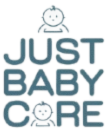
Add Your Heading Text Here
The Child Care and Early Years Act (CCEYA, 2014) provides the legislative foundation for ensuring high-quality, safe, and inclusive early learning environments in Ontario. This resource has significantly influenced my understanding of professional responsibilities and regulatory standards in child care. During both coursework and practicum, I applied key elements of the Act—such as child-to-educator ratios, health and safety practices, and licensing protocols—to ensure a secure and nurturing environment for all children.
I included this resource in my portfolio to reflect my commitment to ethical practice and regulatory compliance. It serves as evidence of my capacity to integrate legal expectations into everyday planning and care. The attached self-test showcases my competency in interpreting and applying CCEYA principles, underlining my dedication to excellence and accountability in the early learning sector.

Indigenous Early Learning and Child Care Framework (IELCC, 2018)
The Indigenous Early Learning and Child Care (IELCC) Framework is a visionary guide that centers Indigenous cultures, languages, and knowledge systems in early childhood education. Its focus on self-determination, cultural identity, and community partnership has profoundly shaped my approach to inclusive pedagogy.
I have incorporated this framework in practice by designing culturally responsive activities such as nature-based storytelling that honour Indigenous traditions and promote land-based learning. I’ve also initiated conversations with colleagues to ensure our classroom environments respect and reflect diverse cultural perspectives. Including the IELCC in my portfolio demonstrates my dedication to reconciliation, equity, and the celebration of Indigenous identities in early learning settings

How Does Learning Happen? (OMEd, 2014)
“How Does Learning Happen?” (HDLH) is Ontario’s pedagogical framework that has been central to my development as an educator. Built on the four foundations—belonging, well-being, engagement, and expression—HDLH guides educators in creating responsive, inclusive, and meaningful learning environments. This framework has helped me embrace a child-centred approach where children’s ideas and voices shape their learning experiences.
In my practicum, I used HDLH to design sensory play experiences based on children’s interests, as well as to create a calming space that supports emotional regulation. The document’s reflective prompts encouraged me to think critically about my role and adapt practices to meet diverse developmental needs. I chose this resource because it aligns closely with my philosophy and illustrates my commitment to intentional, relationship-driven pedagogy.
